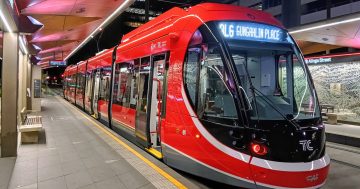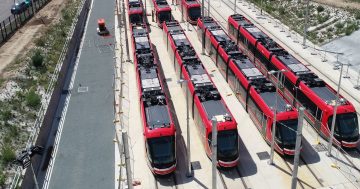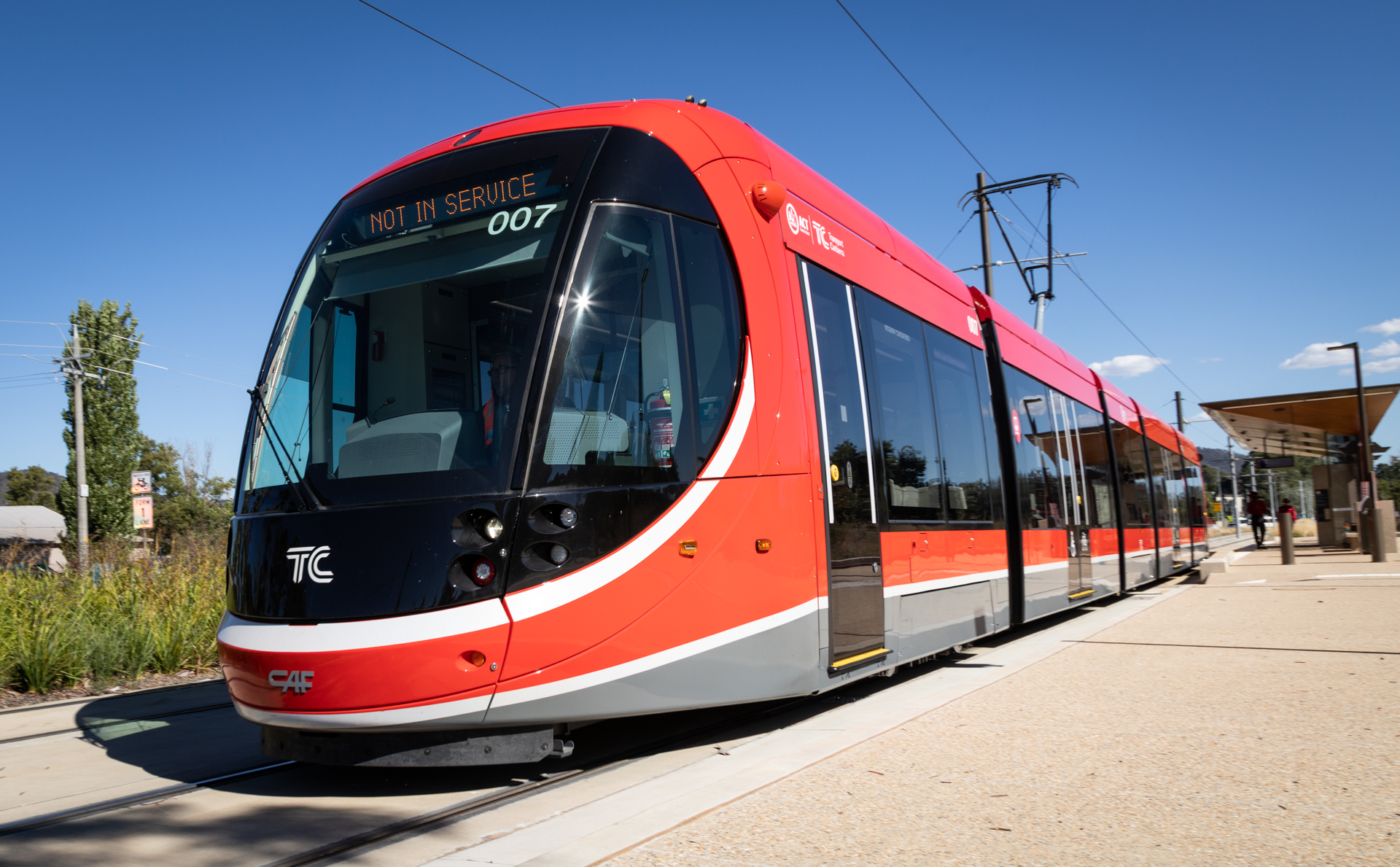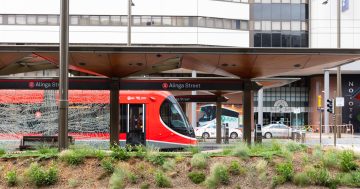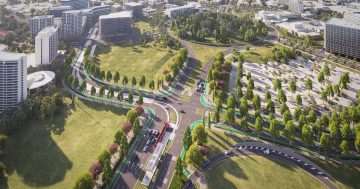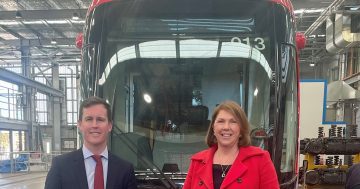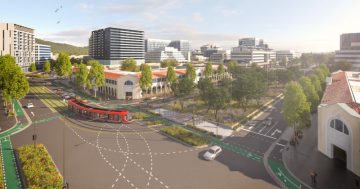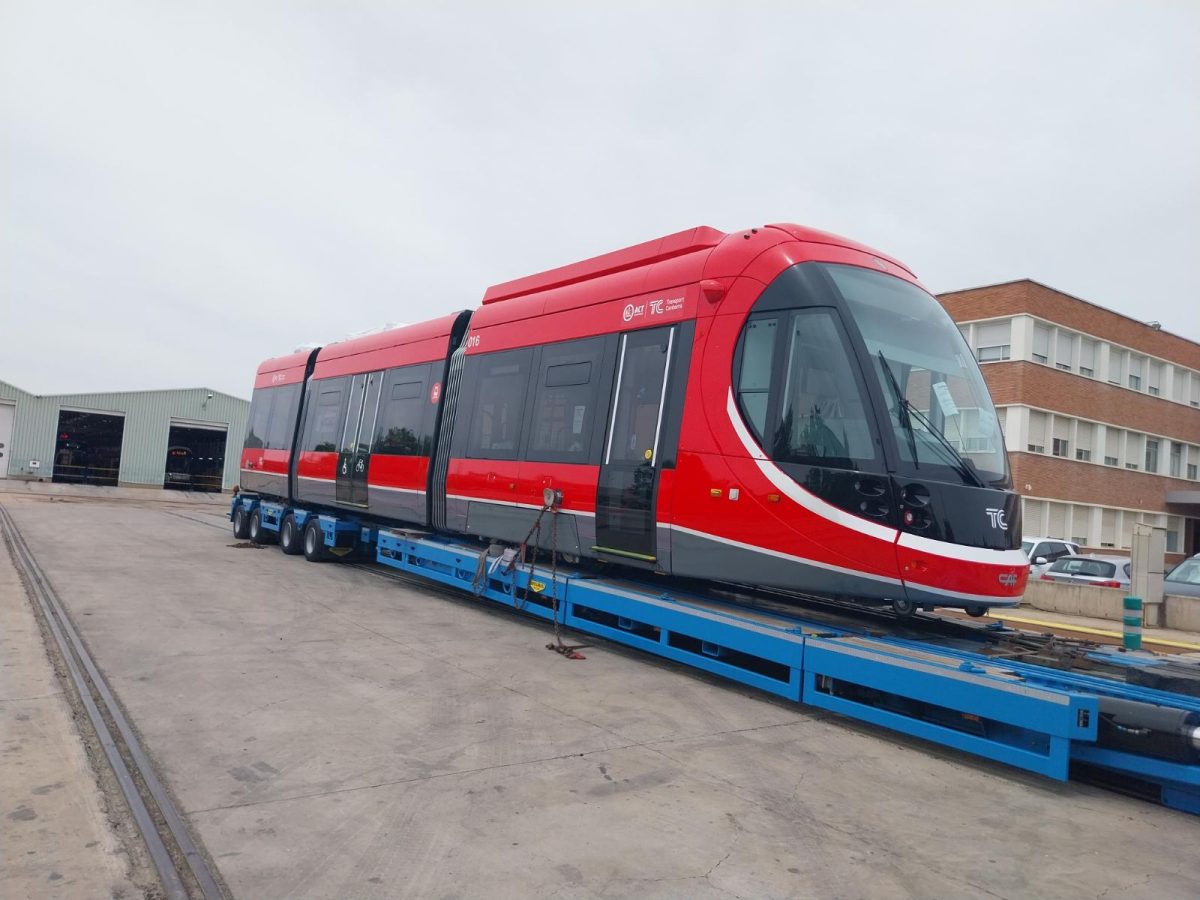
The light-rail vehicles will travel nearly 18,000 km before they arrive in Canberra. Photo: Chris Steel, Facebook.
The first of Canberra’s five new battery-electric light-rail vehicles (LRVs) will have clocked up more than 18,000 km before it takes its first passengers.
One is currently holed up in a Norwegian cargo ship, Hoegh London, off the west coast of Africa, en route to Australia from the Construcciones y Auxiliar de Ferrocarriles (CAF) factory in Spain.
ACT Minister for Transport Chris Steel announced the news on Facebook this week, including a handy tracking link for the ship (in case you’re interested).
He said the LRV will face a test process before it’s commissioned and added to the existing wired fleet early next year.
“This process will allow the current fleet to be gradually cycled offline throughout 2025 and 2026 to retrofit vehicles with new battery technology.”
The original $710 million contract between the ACT Government and Canberra Metro in 2016 included the supply – and subsequent maintenance for 20 years – of 14 33-metre-long, five-section ‘Urbos’ low-floor LRVs by CAF.
These are the ones in use along Stage 1 between Gungahlin and Civic, powered by traditional wires strung from poles.
But when the National Capital Authority (NCA) required the next stage of light rail from Commonwealth Avenue Bridge through the Parliament Triangle to be wire-free to preserve “heritage vistas”, the government had to make some changes.
Under the contract with Canberra Metro for Stage 2A, five additional battery-powered LRVs were ordered in 2022.
These will be charged as the LRV travels along the wired sections of track, supplemented by a regenerative braking system where the motor acts as a generator during deceleration.
Mr Steel has previously said the wire-free aspect will add to the cost of light rail. The Mitchell depot is currently being upgraded to fit the new LRVs, and the existing 14 LRVs will be retrofitted with the same nickel-cadmium (Ni-Cd) batteries in a process expected to take several years.
The exact cost of the transition remains hazy.
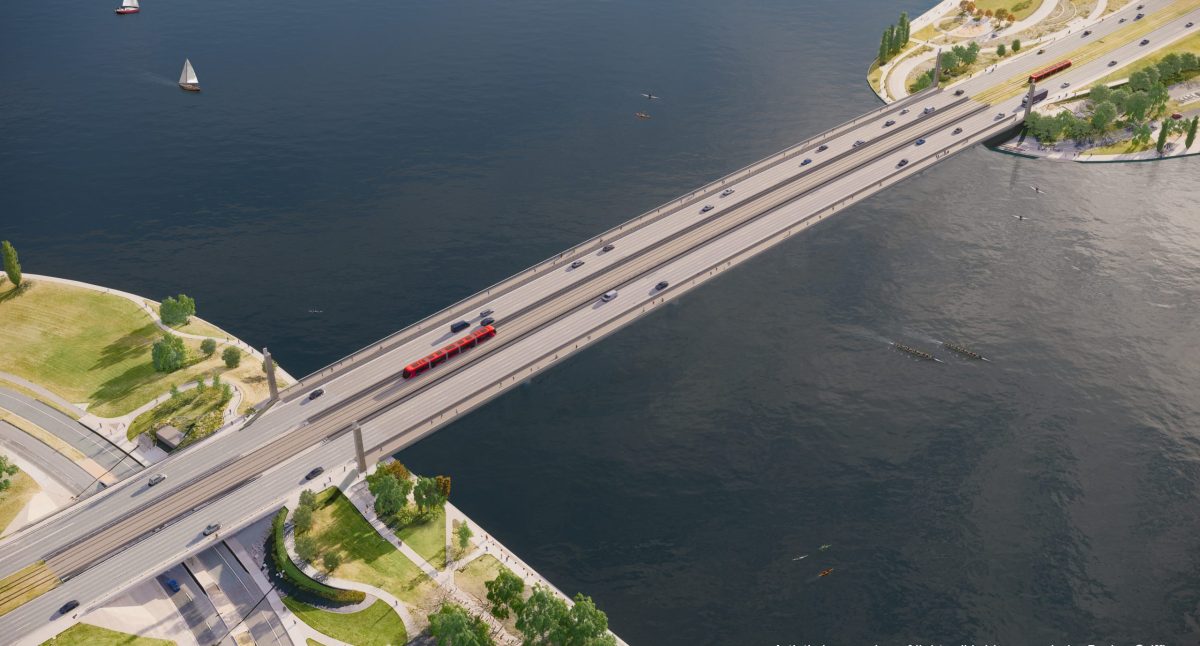
Light rail will be wire-free from Commonwealth Park through the Parliamentary Triangle to Adelaide Avenue. Image: ACT Government.
The Stage 2A contract is valued at $577 million, including $288.5 million from the Federal Government, but during a budget review committee inquiry in March, Opposition Leader Elizabeth Lee estimated that a more realistic figure was $1.46 billion.
Of this, she said $149.7 million was for the new LRVs, depot expansion and retrofitting process.
The government has yet to reveal costings on Stage 2B, from Adelaide Avenue to Woden, but the Canberra Liberals have done their own calculations and arrived at a figure of more than $4 billion.
ACT Chief Minister Andrew Barr has dismissed these numbers and argued the cost of the new LRVs should be considered in the context of Stage 1, too.
“The new light rail vehicles aren’t going to run just from Alinga Street to the lake and the expanded depot isn’t going to service light rail vehicles that only operate on the Stage 2A line,” he said in March.
All five new battery-powered LRVs are expected to be in service by the completion of Stage 2A in 2028, with the first by early 2025.
The expansion of the Mitchel depot is scheduled to finish later this year.












